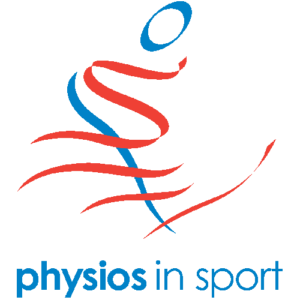What we have learned treating T-junction injuries amongst professional footballers
Keywords: Hamstring, T-junction, Rehabilitation
Introduction
A recent BJSM blog explored the role of neural structures in the occurrence and rehabilitation of distal musculotendinous junction (DMTJ), ‘T-junction’, injuries of the biceps femoris [1]. We read this with interest, having encountered this injury multiple times amongst our players. The nod to the role of ipsilateral trunk flexion/rotation as a contributing factor, along with the complex anatomy and muscle innervation nuances, all resonated with us. Despite attempts at scientific consensus regarding the management of hamstring injuries, guidelines remain quite vague and adopting an individualised approach is emphasised [2]. This leaves a lot of scope for heterogenous rehabilitation programmes, which makes the process challenging (especially for those with limited experience of DMTJ injuries). Our aim here is to share some key practical lessons we’ve learned dealing with T-junction injuries amongst professional footballers.
Early stage
Assessment and diagnosis of acute hamstring injuries has been well documented; however, it is important to have a high level of suspicion for T-junction involvement when an athlete presents with pain in the DMTJ area, particularly when ipsilateral trunk flexion and/or rotation is a component of the injury mechanism. Imaging is extremely valuable in diagnosing a T-junction injury, helping to guide rehabilitation and establish realistic return-to-play expectations [3]. Overall, rehabilitation may continue beyond four months post-injury. Clinicians working in settings where diagnostic imaging is not readily accessible should, again, have a heightened level of suspicion of T-junction involvement when DMTJ rehabilitation is proving particularly troublesome/recurrent. Conservative management versus surgical intervention has been debated [4]; however, high recurrence rates following conservative management [3] may be mitigated by initially ensuring an extended period for biological tissue healing. Re-imaging around eight weeks post-injury to assess progress is desirable, followed by tailored mid-late stage rehabilitation.
Mid-later stages
Previous research has investigated muscle activation during various hamstring strengthening exercises [5]; however, these have all been conducted in the sagittal plane, which neglects the potential role of frontal and transverse movements in the context of T-junction injury.
Although some hamstring rehabilitation protocols do exist [6], due to the recent recognition of this injury type [3] none focus specifically on T-junction injury. With various injury incidences reporting the mechanism to involve trunk flexion and rotation [7], there is a need to establish recommendations in the rehabilitation of T-junction injuries specifically. Ipsilateral trunk rotation and flexion, combined with hip flexion and knee extension has been proposed as a position to target during late-stage gym-based rehabilitation exercises [8].
In terms of gym-based rehabilitation we have combined more traditional hamstring rehabilitation approaches, utilizing both eccentric and isometric muscle contractions, with ipsilateral trunk rotation and flexion, hip flexion and knee extension.
The exercises demonstrated below are some examples we have used with players returning from T-junction injuries, which highlight the various complexities of the aforementioned movements and how these may form a logical progression throughout a rehabilitation programme.
Video 1 – ½ Kneeling hamstring isometric cable chop
Video 2 – ½ kneeling hamstring slide outs w/ MB slam
Video 3 – Split stance hamstring pallof cable rotation
Video 4– Single-leg between bench hamstring isometrics – reactive MB throws
Return to running progressions following hamstring strain injuries are well documented; however, there remains limited guidance in the way of returning players back to their high-level sport specific demands [9]. Consideration should be given to the deceleration and rotational demands of sport specific tasks, particularly evasion, shooting and crossing in the football context [10] as well as careful and gradual exposure to maximal sprinting.
Conclusion
Here is our non-exhaustive summary of how to approach T-junction injuries:
- Extended early-stage protection/biological healing time-period.
- Diagnostic imaging of suspected T-junction injuries.
- Include multi-planar exercises during gym-based rehabilitation that simultaneously incorporate ipsilateral trunk flexion and rotation, hip flexion and knee extension.
- In addition to on-pitch running progressions, consider sport-specific movement exposure including different types of kicking.
Authors
Robert McCunn1, Craig Maitland1 & Aiden Oakley1
1 Heart of Midlothian Football Club, Edinburgh, United Kingdom
No competing interests declared.
References
- https://blogs.bmj.com/bjsm/2024/09/06/the-nervy-business-of-t-junction-hamstring-injuries/

- Paton, B. M., Read, P., van Dyk, N., Wilson, M. G., Pollock, N., Court, N., Giakoumis, M., Head, P., Kayani, B., Kelly, S., Kerkhoffs, G. M. M. J., Moore, J., Moriarty, P., Murphy, S., Plastow, R., Stirling, B., Tulloch, L., Wood, D. & Haddad, F. (2023). London International Consensus and Delphi study on hamstring injuries part 3: rehabilitation, running and return to sport. British Journal of Sports Medicine, 57(5), 278-291.
- Entwisle, T., Ling, Y., Splatt, A., Brukner, P. & Connell, D. (2017). Distal musculotendinous T junction injuries of the biceps femoris: An MRI case review. Orthopaedic Journal of Sports Medicine, 5(7).
- Kayani, B., Ayuob, A., Begum, F., Singh, S. & Haddad, F. S. (2020). Surgical repair of distal musculotendinous T junction injuries of the biceps femoris. American Journal of Sports Medicine, 48(10), 2456-2464.
- Bourne, M. N., Williams, M. D., Opar, D. A., Al Najjar, A. Kerr, G. K. & Shield, A. J. (2017). Impact of exercise selection on hamstring muscle activation. British Journal of Sports Medicine, 51(13), 1021-1028.
- Macdonald, B., McAleer, S., Kelly, S., Chakraverty, R., Johnston, M. & Pollock, N. (2019). Hamstring rehabilitation in elite track and field athletes: applying the British Athletics Muscle Injury Classification in clinical practice. British Journal of Sports Medicine, 53(23), 1464–1473.
- https://blogs.bmj.com/bjsm/2022/12/12/moving-towards-a-triplanar-view-of-hamstring-strain-injuries/
- https://www.fmpa.co.uk/cpd/location-location-location-a-key-consideration-in-hamstring-rehabilitation/
- Silder, A., Sherry, M. A., Sanfilippo, J., Tuite, M. J., Hetzel, S. J. & Heiderscheit, B. C. (2013). Clinical and morphological changes following 2 rehabilitation programs for acute hamstring strain injuries: A randomized clinical trial. Journal of Orthopaedic & Sports Physical Therapy, 43(5), 284–299.
- Brophy, R. H., Backus, S. I., Pansy, B. S., Lyman, S. & Williams, R. J. (2007). Lower extremity muscle activation and alignment during the soccer instep and side-foot kicks. Journal of Orthopaedic & Sports Physical Therapy, 37(5), 260–268.